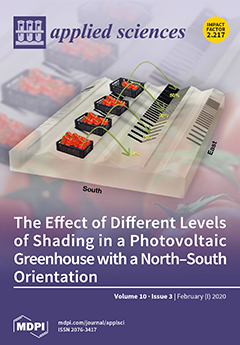Noise in shopping centers and restaurants can reduce intelligibility and affect the comfort of the employees working for long periods in such environments. In this study, the interior acoustics of a shopping mall are studied by measuring the reverberation time (RT), with no
[...] Read more.
Noise in shopping centers and restaurants can reduce intelligibility and affect the comfort of the employees working for long periods in such environments. In this study, the interior acoustics of a shopping mall are studied by measuring the reverberation time (RT), with no occupation, and the equivalent sound pressure levels (L
Aeq), with occupations at different times of the day, over a period of one week. The measurements were done at different locations, chosen based on their usage (shopping areas, entrances, food courts, and playing area). The values are correlated to the subjective acoustic comfort and the experience of loudness of the staff working at these locations, as measured through a questionnaire. The average RT values that were measured ranged between 0.9 s in the food court and 1.4 s for the main entrance. The L
Aeq was measured with a minimum of 58 dB in the shopping area in the early morning and a maximum of 83 dB in the playing area in the evening. The results showed an increase in the L
Aeq for the afternoon and evening in comparison with the early morning and midday time (
p < 0.05); similarly, the sound levels for the weekends were higher than the weekdays (
p < 0.05). The questionnaire results showed that headaches and difficulties in communicating with others (speech intelligibility) are the most important problems induced by the noise in shopping malls, occurring for 47.1% and 38.2% of respondents, respectively.
Full article





